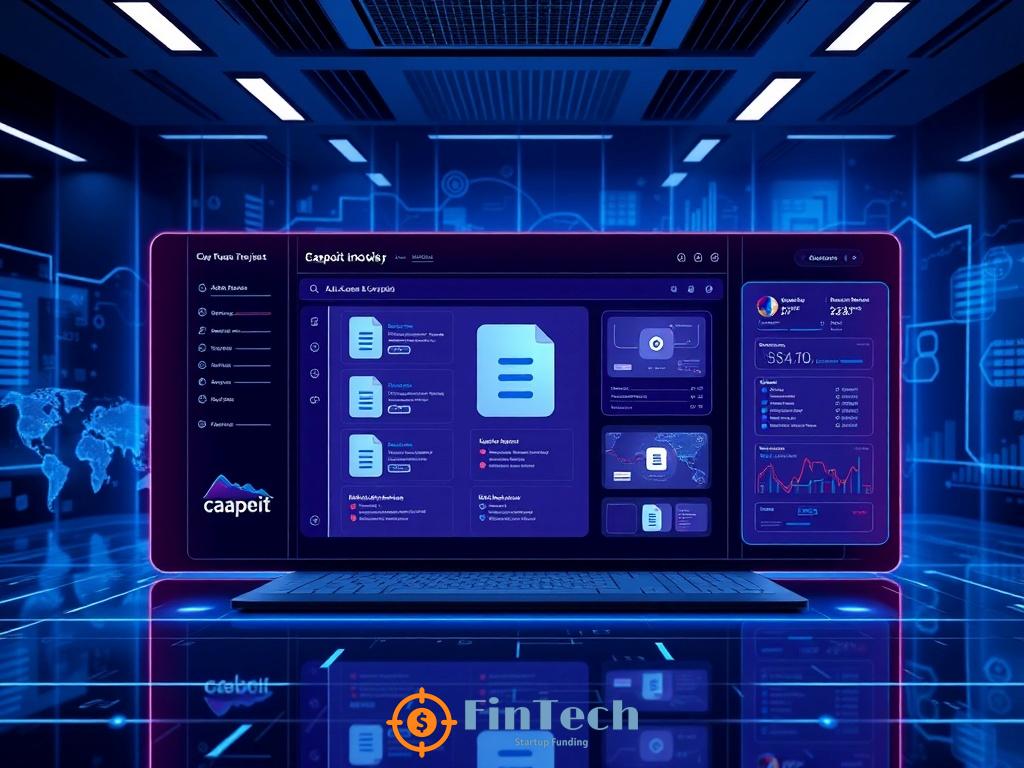Overview of Data Room Management

In the fast-paced world of financial technology, the exit process—be it through acquisition, merger, or IPO—requires meticulous planning and execution. Central to this process is the data room, a secure repository that facilitates the sharing of sensitive information between stakeholders. As FinTech companies navigate complex regulatory environments and investor expectations, effective data room management becomes indispensable. Understanding its components can significantly influence the success of an exit strategy.
Data room management encompasses various elements that ensure the integrity, security, and accessibility of critical documents. Here, we explore the essential components that contribute to the effectiveness of a data room during FinTech exit processes:
- Document Organization: Proper categorization and indexing of documents to facilitate easy access.
- Security Protocols: Implementation of encryption and access controls to protect sensitive data.
- User Management: Defining user roles and permissions to control who can view or edit documents.
- Audit Trails: Keeping track of all activities within the data room for compliance and transparency.
- Collaboration Tools: Features that allow stakeholders to comment or discuss documents within the platform.
With numerous data room providers in the market, selecting the right solution requires careful consideration. Factors such as scalability, user-friendliness, and customer support play a significant role in this decision-making process. Below is a comparison table highlighting key features to consider:
| Feature | Provider A | Provider B | Provider C |
|---|---|---|---|
| Document Security | High | Medium | High |
| Ease of Use | Moderate | High | Moderate |
| Customer Support | 24/7 | Limited | 24/7 |
| Cost | $$$ | $$ | $$$ |
Understanding these features and how they align with your specific needs can help FinTech companies make informed decisions about which data room solution will best support their exit strategies.
Best Practices for Organizing Financial Documents
In the high-stakes environment of FinTech exits, the organization of financial documents is not merely a procedural formality; it is a strategic imperative. A well-structured data room can act as a beacon of clarity for potential investors or acquirers, showcasing a company’s preparedness and professionalism. To maximize the effectiveness of a data room, adhering to best practices for document organization is essential.
Prioritizing Clarity and Relevance is paramount when organizing financial documents within a data room. Stakeholders should focus on presenting information that is not only relevant but also clearly categorized. For instance, financial statements, projections, and supporting documents should be bundled cohesively, allowing for quick navigation without overwhelming users. The use of intuitive naming conventions can further enhance the user experience, ensuring that critical documents are easily identifiable and accessible.
Implementing Version Control is another vital component in the management of financial documents. In the dynamic landscape of FinTech, where data can rapidly evolve, maintaining a clear record of document versions is crucial. This practice helps prevent confusion over which document is the latest, thus fostering trust and transparency among stakeholders. By establishing a systematic approach to versioning, FinTech companies can ensure that all parties are on the same page during negotiations, ultimately streamlining the exit process.
Moreover, creating a centralized dashboard within the data room can enhance document organization by providing stakeholders with a visual overview of available resources. This dashboard serves as a navigational tool, allowing users to quickly locate specific categories or documents without sifting through an extensive archive. By integrating features such as search functionality and filtering options, companies can significantly reduce the time and effort required to find pertinent information.
In summary, successful data room management during FinTech exits hinges on the meticulous organization of financial documents. By prioritizing clarity, implementing robust version control, and utilizing centralized dashboards, companies can present a compelling case to investors while ensuring a seamless transition through the exit process.
Ensuring Security and Compliance in Data Rooms
In the intricate landscape of FinTech exits, the safeguarding of sensitive information is paramount. A data room not only serves as a repository for vital documents but also stands as a fortification against potential breaches that could jeopardize the exit process. As companies prepare for acquisition or IPO, ensuring robust security measures and compliance protocols within their data rooms becomes a non-negotiable aspect of their strategy to foster investor confidence and maintain regulatory standards.
Establishing a Multi-Layered Security Framework is essential for protecting the integrity of data rooms. This involves implementing advanced encryption methods to secure documents both at rest and in transit. By utilizing end-to-end encryption, FinTech companies can ensure that unauthorized access to sensitive financial data is virtually impossible. Moreover, the integration of two-factor authentication adds an additional layer of security, requiring users to verify their identity through multiple channels before accessing the data room. This multi-faceted approach not only protects against external threats but also establishes a culture of security awareness among users.
Compliance with industry regulations is equally crucial in the realm of data room management. FinTech firms must navigate a labyrinth of legal requirements, from GDPR to SEC regulations, which dictate how sensitive information should be handled. Implementing compliance measures within the data room can simplify this process, ensuring that all shared documents adhere to the necessary legal standards. Regular audits and automated compliance checks can help organizations stay informed about their adherence to these regulations, thereby minimizing risks associated with potential non-compliance. By aligning their data room practices with regulatory expectations, FinTech companies can cultivate trust with stakeholders, demonstrating their commitment to ethical and responsible data management.
Furthermore, establishing real-time monitoring and reporting mechanisms can significantly enhance both security and compliance efforts. By utilizing analytics tools, companies can track user activity within the data room, identifying any unusual patterns that may indicate security threats. Additionally, generating detailed reports on document access and modifications provides invaluable insights for compliance audits, allowing firms to maintain a transparent record of their data management practices. Such proactive measures not only mitigate risks but also empower FinTech firms to respond swiftly to potential breaches or compliance challenges, reinforcing their reputation as trustworthy entities in the financial sector.
Role of Data Rooms in Due Diligence
As companies in the financial technology sector approach exit opportunities, the due diligence phase becomes a pivotal moment that can significantly shape the outcome of the transaction. During this critical period, data rooms emerge as indispensable tools, providing a secure environment for the exchange of sensitive information. The meticulous management of these data rooms not only facilitates transparency but also enhances the credibility of the FinTech entity in the eyes of potential investors or acquirers.
Streamlining Information Access is one of the core functionalities that data rooms offer during the due diligence process. By organizing and categorizing essential documents such as financial statements, compliance records, and operational data, data rooms enable prospective buyers to conduct thorough evaluations efficiently. This structured approach not only saves time but also minimizes the risk of oversight, ensuring that no vital information is missed during the scrutiny. The ability to access documents quickly can often be the deciding factor for investors weighing multiple opportunities.
Moreover, data rooms foster a sense of collaboration and communication among stakeholders involved in the due diligence process. With integrated features that allow for real-time discussions, comments, and queries, all parties can engage in meaningful dialogues surrounding the presented information. This interactive environment promotes a deeper understanding of the FinTech company’s operations and potential, ultimately leading to more informed decision-making. By encouraging dialogue, data rooms help bridge the gap between the seller and potential buyers, facilitating a smoother negotiation process.
Furthermore, the importance of security and compliance cannot be overstated in the context of due diligence. As sensitive financial and proprietary data are shared, the risk of unauthorized access or data breaches remains a significant concern. Data rooms are equipped with advanced security measures such as encryption, access controls, and audit trails that ensure only authorized personnel can access critical documents. These security features not only protect the integrity of the information but also instill confidence among investors, who can rest assured that their evaluations are based on accurate and secure data. The commitment to stringent security measures reflects a FinTech company’s dedication to protecting its stakeholders’ interests.
Technological Solutions for Efficient Data Room Management
In the dynamic landscape of FinTech, leveraging technology for data room management is not merely an advantage but a necessity. As companies prepare to navigate exit strategies, the integration of advanced technological solutions can greatly enhance the efficiency and effectiveness of data room operations. These solutions streamline workflows, improve security, and facilitate better collaboration among stakeholders, ultimately contributing to a smoother exit process.
Automation tools represent a transformative approach to data room management. By automating repetitive tasks such as document uploads, notifications, and access permissions, FinTech companies can significantly reduce the administrative burden on their teams. This allows key personnel to focus on more strategic activities, such as preparing for negotiations and engaging with potential buyers.
Moreover, automated reminders and alerts can ensure that stakeholders are kept informed of critical deadlines and updates, thereby minimizing the risk of delays during the exit process. The implementation of these tools not only enhances operational efficiency but also fosters a culture of accountability.
The integration of advanced analytics within data rooms provides FinTech companies with valuable insights into user behavior and document interactions. By tracking how and when stakeholders access documents, companies can identify patterns and preferences, enabling them to tailor their communication and presentation strategies accordingly.
For instance, analytics can reveal which documents are being accessed most frequently, guiding companies on where to allocate additional resources or focus during presentations. This data-driven approach empowers FinTech firms to make informed decisions that align with investor interests, thereby improving their chances of a successful exit.
Effective collaboration is crucial during the exit process, and modern data room solutions often incorporate integrated collaboration platforms. These platforms enhance communication among internal teams and external stakeholders, allowing for real-time discussions, document sharing, and feedback loops.
By utilizing features such as comment threads and version history, team members can engage directly within the data room, ensuring that all voices are heard, and decisions are made collectively. This collaborative environment not only streamlines the due diligence process but also reinforces relationships among stakeholders, paving the way for successful negotiations.
In summary, the adoption of technological solutions in data room management is essential for FinTech companies aiming for a seamless exit process. From automation tools that enhance efficiency to advanced analytics that inform decision-making and collaboration platforms that foster teamwork, these innovations are reshaping how data rooms operate, ultimately driving more favorable outcomes during exits.



